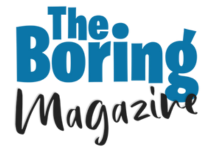Creating a product that genuinely connects with users is crucial for standing out and achieving success. Many teams rush to build features based on assumptions, only to find their product falls short of expectations or fails to gain traction. The key difference between success and failure often comes down to understanding the users: their needs, behaviors, and pain points. This is where user research becomes indispensable.
Whether you’re building a new app, a software platform, or even a live casino game, knowing what people want and how they interact with your product shapes your chances of success. If you’re interested in how casino operators use feedback to enhance player engagement and game design, click here to explore the latest trends in live gaming experiences.
What Is User Research?
User research involves collecting and analyzing data about people’s behaviors, preferences, and motivations. It goes beyond guessing what individuals might want by observing and engaging with them directly. This research can be qualitative, such as interviews and usability testing, or quantitative, like surveys and usage analytics. The goal is to create a clear picture of the user’s journey and identify areas where the product can be improved to better meet their expectations.
By applying this activity, teams gain insights into real-world usage, uncover unmet needs, and validate assumptions before investing heavily in development. It’s a proactive approach to reduce guesswork and create products that deliver real value.
Key Benefits of User Research
-
User Needs and Pain Points
It reveals what people truly want and the challenges they face. This understanding helps prioritize features that solve real problems rather than adding unnecessary complexity. Without these insights, efforts may be spent on features that do not effectively solve user issues, and this leads to missed opportunities.
-
Risk Reduction and Cost Control
By validating ideas early through research, teams can avoid expensive changes down the road. Catching usability issues before launch saves time and resources. Early feedback ensures that the product evolves in the right direction. This reduces the likelihood of major setbacks during later development stages.
-
Usability Improvement and Customer Satisfaction
Insights from testing highlight friction points and allow teams to create more intuitive, enjoyable experiences. This directly impacts customer satisfaction and loyalty. When people find a product easy and pleasant to use, they are more likely to recommend it and remain long-term customers.
-
Feature Prioritization and Roadmap Alignment
Not all features hold equal value for individuals. Research helps product managers focus on what matters most. It aligns development efforts with user priorities. This targeted approach ensures resources are invested wisely and delivers maximum impact. By understanding preferences and pain points, teams can build a roadmap that reflects real needs rather than assumptions.
Common User Research Methods
Different research methods serve different purposes and stages of development:
- User interviews: These are one-on-one conversations that provide deep, qualitative insights into users’ motivations, frustrations, and goals. They are especially valuable in the early stages of development to explore needs and gather detailed feedback.
- Surveys: Quantitative tools to gather broad feedback from many users quickly. They validate hypotheses, measure satisfaction, and provide data to guide broader product decisions.
- Usability testing: This method involves closely observing people as they interact with prototypes or finished products to identify usability problems and better understand their behavior. It is critical during the design and testing phases to ensure the product is intuitive and meets expectations before launch.
- Analytics and heatmaps: These tools track user interactions on live products and provide data on how features are used and where individuals encounter difficulties. Analytics provide continuous insights to prioritize improvements and enhance the user experience.
Choosing the right method depends on your goals, timeline, and resources. Often, a combination of techniques provides the most comprehensive understanding.
How to Integrate User Research Into Your Process
Incorporating this activity doesn’t have to be complex or expensive. Start small by scheduling regular interviews or running quick usability tests on prototypes. Encourage your team to engage with real users early and often to gather feedback before making decisions.
Use tools like survey platforms or analytics software to collect data efficiently. Create a culture where insights are valued and shared across departments — from product through marketing to customer support.
Even when moving quickly, incorporating user research anchors development efforts in reality and enhances the likelihood of a successful product.

